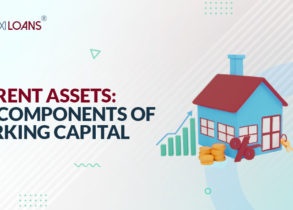Aug 08, 2023
Nov 30, 2025

Overview:
Net working capital plays a vital role in evaluating a company’s financial well-being. It represents the difference between the company’s current assets, such as cash, and its current liabilities, like bills and salaries.
Maintaining positive net working capital empowers the company to navigate challenges and invest in growth after fulfilling immediate obligations. This metric serves as a safety net during downturns and enables the pursuit of expansion opportunities.
What Is Working Capital — Meaning And Definition
Working capital is a measure of how well a company manages its money in the short term. Positive working capital indicates a company’s ability to cover immediate bills and debts. Conversely, negative working capital suggests struggles in meeting short-term obligations
CFOs and financial managers must watch ‘trailing net working capital,’ – a crucial measuring stick for financial health. If it’s going down over the past 12 months, quarters, or years, it’s not a good sign. It reflects that the company might not have enough cash and could run into financial trouble.
Working capital isn’t just important for entrepreneurs – investors and managers care a lot about it too. For investors, it helps them figure out if a company can survive when things get tough financially. And for the big bosses, it helps them see ahead and spot any money problems that might pop up. To sum it all up, having enough working capital is crucial for a company. It’s like having spare money in case things get tricky.
How To Calculate Net Working Capital?
To calculate the net working capital, you just subtract the total current liabilities from the total current assets. This helps the business know if it has enough money to cover its short-term needs.
So, the working capital formula is:
Working capital = What you own (Current assets) – What you owe (Current liabilities)
Current assets: Money you’ll receive from customers and money currently in hand.
Current liabilities: Debts to be paid to suppliers and others.
Understanding The Building Blocks Of Working Capital
Working capital, a critical financial concept, consists of two essential components:
1. Current Assets:
These are the valuable resources a company possesses that can be quickly turned into cash within a year or a single business cycle. Consider items like cash in the bank, easily sellable investments such as stocks and bonds, money owed by others, and short-term prepaid expenses. Essentially, anything that holds the potential to transform into cash relatively swiftly falls under this category.
2. Current Liabilities:
In contrast, this pertains to the financial obligations a company is accountable for and the expenses it needs to settle within a year or a business cycle. It encompasses items like rent payments, utility bills, debts that must be repaid, and impending tax payments. Essentially, any financial responsibility that requires prompt action and payment belongs to this category.
The relationship between current assets and current liabilities is important. The goal is to ensure that the value of current assets surpasses the value of current liabilities. In simpler terms, the resources available should be sufficient to comfortably meet short-term financial obligations and operational needs.
To break it down further:
Current Assets:
- Cash and cash equivalents
- Prepaid Expenses
- Accounts Receivable
- Marketable Securities
- Current Liabilities
- Other Liquid Assets
Current Liabilities:
- Notes payable
- Accounts Payable
- Accrued Liabilities
- Current Portion of Long-Term Debt
- Unearned Revenues
Now, let’s look at some important terms:
1. Days Sales Outstanding (DSO): This is how long, on average, your customers take to pay their bills. A shorter DSO means customers pay you faster.
2. Days Payables Outstanding (DPO): This is how long, on average, you take to pay your suppliers. A longer DPO means you are holding onto your money for a bit longer.
3. Days Inventory Outstanding (DIO): This shows how quickly you sell your inventory or stock. If this number is smaller, it’s better – it means you are selling things faster.
4. Cash Conversion Cycle (CCC): This is the time it takes to turn your invested money in inventory back into cash. The formula for CCC is DIO + DSO – DPO.
A shorter CCC is great because it means you are changing inventory into cash faster. And there are three ways companies can do this:
- Ask customers to pay quicker (shorter DSO).
- Extend the time to pay suppliers (longer DPO).
- Reduce the time they hold onto inventory (shorter DIO).
The Importance Of Working Capital for Your Business
No matter how big or small your business is, working capital is super important. Here’s why it’s so good for your business:
- Keeps Things Running Smoothly: Working capital helps things go smoothly in your business. It keeps the production moving without any hitches.
- Boosts Money Flow: It’s like a boost for your money. Working capital makes sure you have enough cash to handle your day-to-day stuff.
- Handles Fixed Assets Right: It’s not just about cash – it also helps you take care of durable assets you own, like machines and buildings.
- Makes Your Business Look Good: Having good working capital makes your business look awesome. People think your business is doing well.
- Gets You Discounts With working capital: you can avail better discounts. Suppliers might give you a deal if they see you are doing well financially.
- Makes Borrowing Easy: Need a working capital loan? Working capital makes it easier to get loans from banks. They see you are good at handling money.
- Handles Surprises: Life can throw surprises, even for businesses. Working capital helps you tackle unexpected things without freaking out.
Types Of Working Capital:
Here’s a concise breakdown of types of working capital:
- Gross Working Capital: This is the total of short-term assets, excluding liabilities.
- Net Working Capital: It’s assets minus liabilities, indicating operational strength.
- Permanent Working Capital: The minimum needed for ongoing functions.
- Regular Working Capital: For everyday operations, like salaries and raw materials.
- Reserve Margin Working Capital: Kept for unexpected events, part of permanent capital.
- Variable Working Capital: Temporary funds, split into seasonal and special needs.
- Seasonal Variable: Copes with spikes in expenses, like festive or high-demand times.
- Special Variable: Reserved for specific purposes or unforeseen events.
- Negative Working Capital: When liabilities exceed assets, causing a deficit.
Working Capital Ratio- Assessing Financial Health
Evaluating the financial health and efficiency of your company holds great significance. You can assess the financial health by examining the “working capital ratio.” The working capital ratio shows if a business can handle its bills.
So, it’s a measuring tool for how well the company can handle its short-term obligations. If the ratio is lower than 1, it’s like a warning sign that the company might not have enough working capital. But if it’s above 2, it suggests the company might not be using its extra money wisely. The best range is usually between 1.2 and 2.0. Another name for working capital is “net working capital.”
Ratio Analysis: Techniques To Analyse Working Capital
There are various methods to conduct a working capital analysis, but we will be focusing on ratio analysis under this segment:
Ratio Analysis:
This is a straightforward arithmetic display of the relationship between numerals. It measures the short-term liquidity of the firm a.k.a a simple way of seeing how well a company can turn its stuff into cash to cover its bills right away.
| Liquidity Ratios: | Description | Formulas |
| Current ratio | Current Assets/ Current Liabilities | The current ratio helps you see if a company can handle its short-term debts (those due within a year) using its current assets like cash, money owed by others, and goods it plans to sell. If the ratio is high, it’s a sign the company is in a good spot with its available money and stuff—it’s more likely to be able to pay its debts without a hitch. |
| Acid Test Ratio/ Quick Ratio | Quick ratio= CLC+MS+AR where:C=cash & cash equivalentsMS=marketable securitiesAR=accounts receivableCL=current liabilities | The quick ratio shows how well a company can handle its immediate bills using its super liquid assets. These are the things that can quickly turn into cash, like actual cash, money others owe, and investments that can be easily sold.It’s called the “quick” ratio because it gives you a speedy picture of the company’s ability to pay off its short-term obligations. Unlike the current ratio, it doesn’t include the goods the company plans to sell. Another name for this ratio is the “acid-test” ratio. |
| Cash Position Ratio/ Absolute Liquid Ratio | [(cash & Bank) + short-term securities]/Current Liabilities | This ratio includes the actual cash a company has, the money stored in its bank accounts, and temporary investments like things it can easily sell, such as marketable securities. A good target for this ratio is around 50 per cent. This helps ensure the company has a balanced amount of easily accessible funds to cover its short-term debts. |
Inventory Turnover Ratio = Cost of Goods Sold/Average Inventory at Cost
| Ratio | Alternatives | Formula |
| Inventory Turnover Ratio | If you are not sure about the cost of goods sold, there are other formulas you can use to get insights. | Cost of Goods Sold/Average Inventory at Cost |
| Net Sales/Average Inventory at Cost | ||
| Cost of Goods Sold / Average Inventory at Selling Price |
FlexiLoans’ Working Capital Loans:
The purpose of designing these components is to fulfil the financing requirements of small and medium-sized enterprises (SMEs). Challenges faced by SMEs in obtaining small business loans due to limited credit history, collateral requirements, and lengthy approval processes are efficiently tackled through our online platform.
Benefits of Flexiloans Working Capital Loans:
- Faster processing: You can acquire a working capital loan within three days with the necessary paperwork.
- Keeping your ownership: These working capital loans offer fast and straightforward access to credit without requiring collateral.
- Increases your cash flow: The loans let you operate regularly, regardless of cash shortages and fluctuations in sales.
- Boost your credit score: If your company’s bank loan application doesn’t make it due to a low credit score, Flexiloans may help by reporting your loan activities to the Credit Bureau, potentially aiding in the enhancement of your credit score.
Visit our website to empower your business with FlexiLoans’ Working Capital Loans.
FAQs:
Selling fixed assets can indeed affect working capital by boosting cash reserves. However, it’s crucial to know — if essential assets, such as production machinery are liquidated, it might lead to decreased operational efficiency, hindering the company’s ability to generate revenue.
Acquiring fixed assets may temporarily reduce current assets, particularly cash or short-term investments used for the purchase. However, if the acquired assets improve productivity or generate higher returns, it can positively influence long-term profitability and overall asset base. Careful assessment of the trade-off between current and fixed assets is essential.
A current ratio below 1 suggests that the business might struggle to meet expenses on time, posing a risk that investors consider.
A working capital loan serves the purpose of addressing short-term business requirements like cash flow, inventory, and operating expenses. It offers swift and convenient funding access without requiring collateral, making it a suitable choice for MSMEs.







